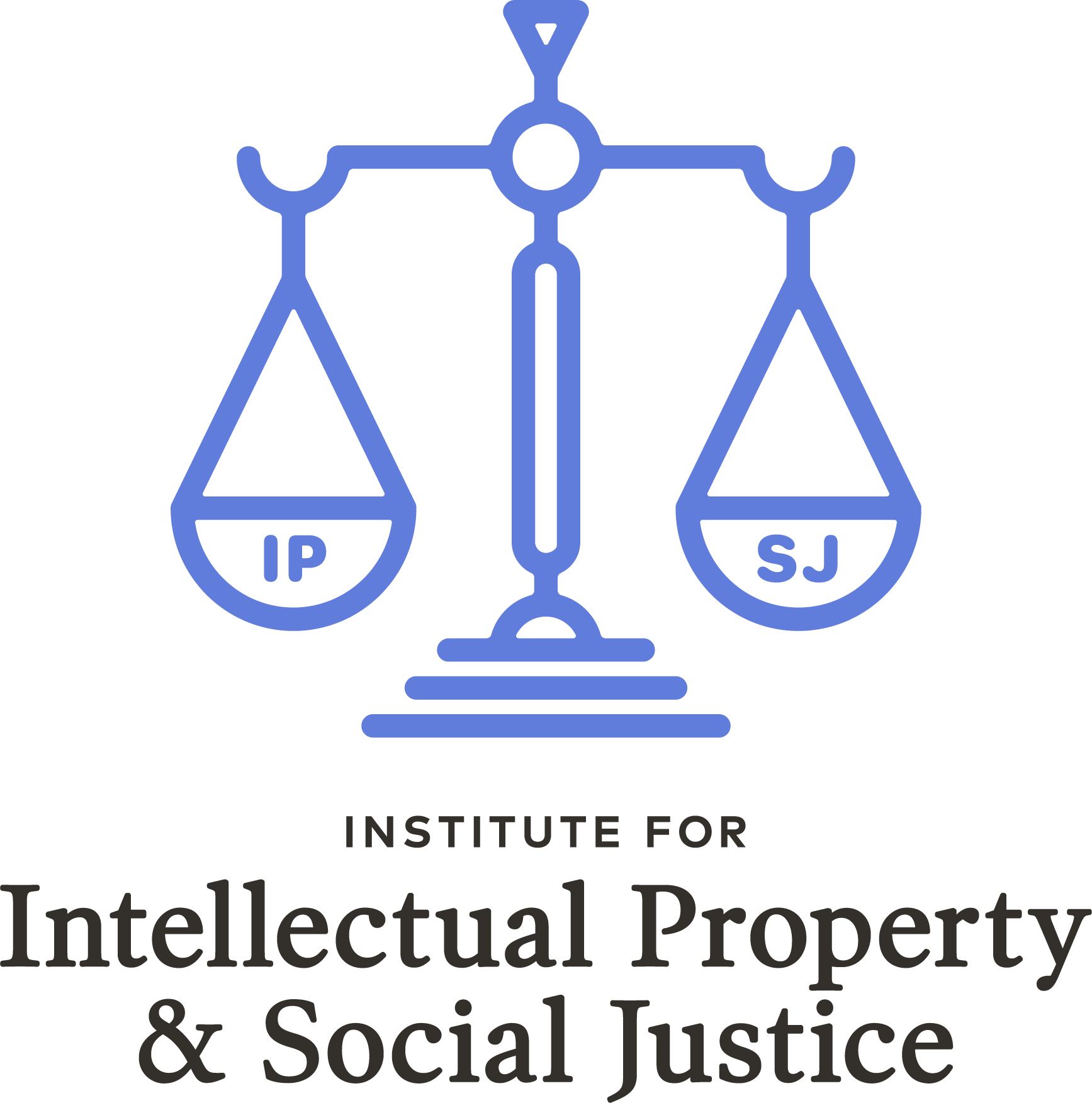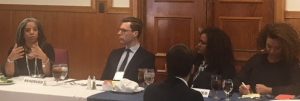For Graffiti Artists, Musicians, Small Business Owners, and more
|
||||||||||||||||
|
Blurred Lines Decision a Social Justice Win?
July 19, 2018Uncategorized,IIPSJ
Blurred Lines’ ruling brings justice to composers like Marvin Gaye
In mid-March, a federal appellate court correctly affirmed the 2015 verdict against Robin Thicke and Pharrell Williams, finding their 2013 “Blurred Lines” hit infringed on Marvin Gaye’s seminal “Got To Give It Up.”
Unhappy with the result, Thicke and Williams have just requested a rehearing of the case. They are likely bolstered by critics who claim composers will be stifled and fearful because of the ruling. But the sky is not falling: The creation of new music can proceed as it always has before.
In fact, the ruling may clarify the scope of musical works, by endorsing audio recordings as evidence of the compositions of “aural” composers who do not use European-based sheet music. This advances social justice for songwriters from disadvantaged backgrounds who were exploited under earlier copyright registration rules and fosters the creation of original compositions going forward.
Our litigation system, contested facts are usually sent to the jury. A judge will decide copyright infringement as a matter of law only where there is a complete absence of credible evidence on one side. In the “Blurred Lines” case, expert musicologists for both sides presented reasonable evidence. Consequently, the trial court rightly submitted this factual dispute for the jury to decide, and the appellate court affirmed that decision.
All parties agree that neither musical style nor musical genre is protected by copyright. Style and genre are abstractions that identify the kinds of musical elements repeatedly used by a composer (style) or by composers in a particular musical field (genre). As abstractions or ideas, they are not copyrightable. Groove is not an abstraction, but rather the particular rhythm instrument parts of a composition taken together. As with any other specific and original composed parts, or particular original combination of parts, a groove can be protectable.
The Gayes’ experts identified particular expressions of both (1) individual elements, such as an original bass line and vocal melodies, and (2) a compilation of musical elements. They also opined that these elements had been copied by Williams and Thicke.
The Thicke parties retained their own experts who disagreed. Because of the importance of observing witnesses and experts firsthand in making decisions about credibility, appellate courts normally defer to jury verdicts absent fatal procedural errors. It is not a judge’s role to second-guess evidence properly presented by a party. The underlying rules of law and procedure have not been changed by the “Blurred Lines” decisions. Indeed, the decisions are examples of those rules being applied in a straightforward fashion.
But something else may have changed for the better. Gaye, like many iconic 20th-century pop composers, was not fluent in European-based sheet music notation. The copyright registration system of the time required “aural” composers (those composing by ear) such as Gaye to submit written notation. Music publishers had employees score a bare-bones interpretation of the composer’s actual song, which might not contain all of its parts, as a placeholder for the full composition.
Multitrack recording technologies allowed aural composers to “score” and arrange their songs on tape. Actual recordings are the best evidence of the full scope of the composition. The year after Gaye composed “Got to Give It Up” in the recording studio, the U.S. Copyright Office changed its rules and allowed the deposit of audio recordings of musical compositions for copyright purposes.
In an amicus brief to the appellate court, we argued that courts should allow such recordings as evidence of the full scope of aural composer’s works. The appellate court noted this and stated that trial courts could address the use of this evidence. Going forward, justice may finally be done for aural composers who have been systematically exploited by the system.
Copyright Claims for Graffiti Artists
Graffiti: Copyrightable Art, Illegal Activity, or Both?
Graffiti on buildings, in alleys, and on trains – sometimes signed, sometimes anonymous, and usually unwanted by the property owner. However, often these creations are both beautiful and edgy. A perfect match for marketing clothing whose image so desperately wants to align! Many brands attract customers based on advertising themselves as street-savvy and edgy. And, while many graffiti artists often do not seek attribution, for obvious legal reasons, that does not necessarily mean that their artwork is free to use by others.
In recent years, the issue of unauthorized use of graffiti in advertising has bubbled up frequently. In 2014, David Anasagasti, a well-known street artist in Miami, sued American Eagle for copyright infringement, alleging unauthorized use of his signature “droopy eyes” in their advertisements. American Eagle used the imagery on their website, as part of their social media presence, as well as in-store displays globally. The case ended in a private settlement.
In the same year, the Italian brand Roberto Cavalli was sued by a group of graffiti artists from California for allegedly using their artwork on the Just Cavalli line of clothing.
The most recent case sparking off a fresh round of discussion on the topic involves H&M, who received a cease and desist letter from Jason “Revok” Williams, over the use of a mural he created in Brooklyn in their ads. In response, H&M filed a lawsuit asking the court to declare that Williams had no copyright to assert because his art was a criminal act. Possibly due to pressure from street artists’ and supporters’ calls for a boycott, H&M withdrew the lawsuit in March 2018.
Does Copyright Protect Graffiti?
United States Copyright law, as stated in 17 U.S.C. §102(a) states that copyright protection subsists “in original works of authorship fixed in any tangible medium of expression, now known or later developed, from which they can be perceived, reproduced, or otherwise communicated, either directly or with the aid of a machine or device.” Copyright protection is derived from the US Constitution, specifically Article 1, Section 8, Clause 8, which states “To promote the progress of science and useful arts, by securing for limited times to authors and inventors the exclusive right to their respective writings and discoveries.”
Another recent case, 5pointz, turned on the Visual Artists Rights Act (VARA) protection granted to artists of authorized works. While street art, the murals at issue were there with the permission of the property owner. This case was a little different in that, the artists had permission to create their murals, with a verbal warning that it could be destroyed at any time. While that case found in favour of the artists, the decision may have had more to do with the “willful” destruction of the street art without sufficient warning to the artist.
VARA, enacted in 1990, recognized the moral rights of artists to their visual works of arts. Codified in 17 U.S.C. § 106A, VARA grants authors of visual work additional rights regarding attribution of the visual art. Specifically, the moral rights of artists of VARA-protected works must be disclaimed, in writing, which did not occur in the 5pointz case.
What does this mean going forward?
Many of the defendants in recent copyright infringement cases involving graffiti have been slow to respond to why they did not simply ask for permission. Some, like H&M, may have been hoping to rely on the defence that unauthorized graffiti is un-copyrightable because it is not legal. Others may have been unable to contact the original artist or assumed they would not take action to protect their intellectual property.
Additionally, property owners, such as those in the 5Pointz case, should not assume that they have the right to destroy or mutilate artwork without obtaining required permits, permission from the artists, or by obtaining a VARA waiver in advance.
Getting a federal court decision stating that graffiti is protected by copyright could have some interesting implications. It will certainly increase the likelihood that retail companies will do additional due diligence to clear the use of graffiti in advertising or, alternatively, not use unauthorized graffiti at all. Additionally, while H&M’s production agency did contact the New York City Parks and Recreation Department for permission, the inability to find an author may not be enough to protect against an infringement allegation in the future.
Likely, some types of commercial use will still be allowed – currently, for architectural and visual works the exceptions of Fair Use and Incidental Use apply to accusations of infringement. For example, the recent Gayle v. Home Box Office, 17-CV-5867 (SDNY May 1, 2018) dismissed an alleged copyright infringement case concerning a shot of graffiti on a dumpster that appeared in the HBO series Vinyl. Interestingly, the court in Gayle did not directly address the question whether graffiti was generally protected by copyright. Instead, the court ruled that the graffiti in question was “never fully visible, let alone legible” and was, therefore, de minimus.
However, commercial users – such as retailers, film studios, etc. – will need to be careful to ensure that, if graffiti features prominently in the commercial use, permission is obtained. Otherwise, a lawsuit could follow. And, while all of the lawsuits involving graffiti have settled to date, it may not be cheap to do so.
So, while existing graffiti may indeed provide a tempting edge for a new marketing campaign, or as the backdrop for a great commercial, companies will need to decide if it is worth the legal or public relations risk. If the original graffiti artist cannot be found or is unwilling to allow their art to be used, it may end up being less expensive to start from scratch than to manage the fallout from an allegation of stolen artwork, damaged reputation, and a lawyer for the lawsuit that follows.
Update on Blurred Lines
Blurred Lines in More Ways Than One – Part III
‘As mentioned in Part II, I didn’t expect to write several posts about this litigation, but it turns out that “Blurred Lines” (Williams v. Gaye) raises several copyright issues—doctrinal, cultural, and historical—worthy of consideration and not easily condensed into a single article. In the first post, I alluded to an editorial written in 2015 by scholars Lateef Mtima and Sean O’Connor supporting the outcome in Williams from a historical perspective, asserting that traditional means of registering works and identifying infringement disfavored artists of color.
Citing this OpEd drew some criticism from a few readers, particularly musicians, who noted that people of color comprised two-thirds of the authors of “Blurred Lines” and that the Mtima/O’Connor opinion seems to be a matter of looking for a problem that doesn’t exist, comparable to often-overwrought and ahistorical complaints about “cultural appropriation.” But discussions about cultural cross-pollination in the art are largely separate from the issues these scholars are raising about copyright law. Still, for context, we must acknowledge that a vast amount of American popular music in the 20th century—jazz, blues, rock, funk, soul, R&B, rap, etc.—is more deeply rooted in African-American traditions than Euro-American traditions.
The amicus brief Mtima and O’Connor wrote with colleague Steven D. Jamar was submitted to the Ninth Circuit in 2016 on behalf of the Institute for Intellectual Property and Social Justice. It argues for affirming the jury’s verdict in Williams, concurring in part and dissenting in part with regard to the evidence admitted at trial. Although the jury arrived at the opinion favored by the brief’s authors, the reasons why Gaye’s sound recording was not admitted as evidence points to the fact that “Got To Give It Up” is among thousands of musical works that happen to fall within an abstruse window in copyright history that, the authors argue, especially disfavored artists of color. For concision, I’ll refer to the amicus brief as the IPSJ Brief, which states …
“For reasons not fully known and not linked to any further change in the statute, at some point (in the 1930s we believe) the Copyright Office began requiring written notation deposits, before again allowing deposits of phonorecordings for musical compositions beginning in the 1980s, and again not linked to statutory changes.”
Like many artists who did not receive formal training, least of all in European staff notation, Marvin Gaye composed by getting the music that was inside him to come out through the instruments and the players and then record the finished sounds in the studio. Many composers—regardless of race or culture—work this way today, of course, and their sound recordings are both valid for copyright registration and as evidence in a prospective infringement litigation.
But Gaye’s 1977 hit was subject to the 1909 Copyright Act, and it predated the apparently inscrutable shift in USCO policy that finally allowed sound recordings as registration deposit copies in the 1980s. Although the IPSJ Brief cannot fully explain a rationale for the fifty-year period when only written-notation scores were accepted for deposit (e.g. the statute did not mandate this), the brief’s authors do allude to lingering, judicial ambiguity stemming from White-Smith v. Apollo, which held in 1908 that piano rolls were not copies of compositions because they were not readable by humans.
Had that ruling gone the other way, it might have set a precedent for accepting sound recordings as deposit copies much earlier in the 20th century. And although SCOTUS held that sound recordings are, constitutionally, “writings” in Goldstein v. California in 1973, there is apparently no clear explanation as to why the Copyright Office did not amend its deposit requirements for musical works for nearly another decade.
As a matter of social justice, and in the service of demanding that copyright must empower the broadest diversity of authors, the IPSJ Brief asserts that the seemingly arbitrary emphasis on written notation between the 1930s and the 1980s was especially harmful to artists of color, who composed almost exclusively in aural traditions. Certainly, it is hard to miss the fact that this period encompasses the span of time when certain styles of black music sneaked into the mainstream via white artists beginning in the 1950s and slowly gained wider acceptance as black music by black artists through the 1960s and 70s.
Partly because written-notation scores were required as registration deposit copies, composers like Gaye relied on other parties to transpose their sound recordings into musical notation. This practice led to two recurring problems, according to the IPSJ Brief: 1) the scores did not always adequately represent the compositions; and 2) unscrupulous managers, label owners, et al sometimes exploited the opportunity to falsely assert co-authorship of the compositions. The brief states …
“The Copyright Office should have accepted phone recordings as registration deposits throughout the entire period in which the 1909 Act was in effect. Neither Gaye nor other composers should today be penalized by restricting evidence of their compositions to a stripped-down lead sheet deposit created to comply with an extra-statutory administrative practice, especially where that deposit does not match the work composed by the author in the studio.”
In the “Blurred Lines” case, the jury was not allowed to compare the two sound recordings but was allowed to consider the “lead sheets” and expert testimony by musicologists. As the IPSJ Brief explains, lead sheets are somewhat rudimentary versions of musical scores that are generally of use only to professional musicians, who can interpolate what’s not on the page and play the song (by ear or from memory) the way the composer meant for it to be played. To get an idea of the difference, I’ll borrow a reference cited in the Brief and direct you to the musicnotes.com page for “Got To Give It Up,” where you can play a computer’s interpretation of the score and decide how much those lifeless and literal beeps and bloops sound like the Marvin Gaye song you know.
The IPSJ Brief asserts that only the sound recording correctly represents the originality (ergo the protectable aspects) in Marvin Gaye’s composition—and that the same is true for thousands of compositions made by artists, who worked in aural traditions rather than standard notation during the rough half-century at issue. Thus, the brief’s authors support the evidence presented by the Gayes’ musicologists, asserting that these experts correctly identified the protectable elements in the work, giving the jury fact-based reason to find infringement. Nevertheless, the authors remain critical of the fact that the sound recording of “Got To Give It Up” was not admitted into evidence.
The IPSJ Brief also argues that the outcome in Williams does not, as many fear, “copyright musical style.” To the contrary, the authors assert that the lines separating “style” (idea) from “originality” (expression) have instead been too often drawn incorrectly due to bias tilting toward certain musical traditions. In practical terms, this means that a composer like Gaye can arrange a dozen unprotectable ideas in a manner that is uniquely expressive, and this can only be analyzed in context to his studio-based process rather than on paper alone.
Whether or not one agrees with this analysis—or with the jury in Williams—Mtima, O’Connor, and Jamar offer an intriguing discussion about copyright history and practice during one of the most prolific, experimental, and culture-shattering periods in Western music. As much as it would be absurd to overlook American musicians of color between the 1930s and 1980s, it seems likewise inappropriate to ignore this aspect of the “Blurred Lines” case rather than to view it in tandem with the subjects of infringement doctrine, case law, and circuit court splits that this litigation has inspired other scholars to address.
IP Community Outreach, Education, and Pro Bono legal support
Recent E-Mail Update
This month our focus is on IP Community Outreach, Education, and Pro Bono legal support. IIPSJ is involved in various new initiatives to promote IP Empowerment and entrepreneurship in marginalized communities which we thought you might find of interest.
The Lawyers’ Committee for Civil Rights: Creative Control
This Fall the Lawyers’ Committee for Civil Rights will launch Creative Control – an initiative which will examine how intellectual property law and policy impacts historically marginalized communities and will provide pro bono IP legal support to community creators and innovators. The goal of Creative Control is to educate community creators and innovators as to the importance of IP rights and protections, to empower online expression, and to provide one-on-one free legal advice from IP attorneys.
LCCR hosted a soft launch of Creative Control at Smith Commons on July 25, 2017, at which more than 70 community creators joined IP experts for discussions on IP protection and how IP law and policy impact creators. In addition, LCCR collaborated with lawyers from the Hogan Lovells law firm to provide one-on-one legal sessions for 22 DC community creators.
IIPSJ Director Professor Lateef Mtima participated in the July soft launch of Creative Control – here’s a link to a sixty-second montage of the launch which highlights the diversity of the attendees and the legal and creative talent showcased during the event:
The official launch this Fall will also include the release of the LCCR white paper, know your (IP) rights primer and the commencement of the pro bono IP legal clinic component.
IP Pro Bono Clinic Database
We have recently updated our website to add a growing list of IP legal clinics and other resources for low or no cost legal services.
Other Topic of Interest
Recently, a federal district court judge struck down part of the copyright for the song “We Shall Overcome”. The song is of unknown origin and was particularly popular during the civil rights era. The copyright was held by several songwriters, including Pete Seeger, since the 1960’s for changes to the original melody and some of the wording. Part of the royalties from the copyright is used for social and cultural programs in the South.
You can read more in the New York Times article “'We Shall Overcome’ Verse Not Under Copyright, Judge Rules” or listen to a music news segment on National Public Radio “Federal Judge Rules First Verse Of 'We Shall Overcome' Public Domain.”
Follow-up on Net Neutrality – Last month we discussed the FCC rulemaking on Net Neutrality. We appreciate the many comments and questions we received in connection with our distribution on net neutrality, we thought you might be interested in formal comments file by National Hispanic Media Coalition regarding the social justice implications. You can find the full comments here and a summary here.
Student Summary: Tam
Summary from a Student: IIPSJ Roundtable: The Aftermath of In re Tam
- Alexis Harrison, rising 2L, Howard University School of Law
This panel discussion included the following speakers; Phillip Hampton, senior counsel at Haynes & Boone 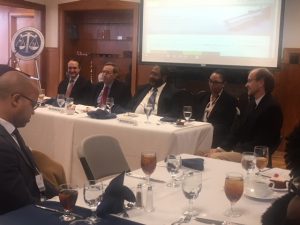 LLP; Toni Hickey, Deputy General Counsel & Chief IP Counsel at Cummins, Inc.; William Thomashower, counsel at Pryor Cashman LLP and; Douglas A. Rettew, partner at Finnegan, Henderson, Farabow, Garrett & Dunner, LLP. It was moderated by Stephen McJohn, a professor at Suffolk University School of Law. The discussion centered around the implications arising from the holding of In Re Tam. Here the Court reversed its course, holding that it is unconstitutional for the Patent and Trademark Office to deny the registration of disparaging content. Attorney Thomashower compared the effect of the opinion to the opening of the Pandora’s box. He is also concerned that the opinion made no mention of a chilling effect in disallowing disparaging content from being registered, while still permitting its use. Another critique found it unfortunate that the Court also did not mention the level of scrutiny used in the opinion.
LLP; Toni Hickey, Deputy General Counsel & Chief IP Counsel at Cummins, Inc.; William Thomashower, counsel at Pryor Cashman LLP and; Douglas A. Rettew, partner at Finnegan, Henderson, Farabow, Garrett & Dunner, LLP. It was moderated by Stephen McJohn, a professor at Suffolk University School of Law. The discussion centered around the implications arising from the holding of In Re Tam. Here the Court reversed its course, holding that it is unconstitutional for the Patent and Trademark Office to deny the registration of disparaging content. Attorney Thomashower compared the effect of the opinion to the opening of the Pandora’s box. He is also concerned that the opinion made no mention of a chilling effect in disallowing disparaging content from being registered, while still permitting its use. Another critique found it unfortunate that the Court also did not mention the level of scrutiny used in the opinion.
Another effect described is the registration of distasteful content in order to limit their use and abuse by other inciting or hateful groups. However, attorney Hickey countered that this would pose a difficult challenge for communities and populations of people that do not have the financial resources to pursue this method of reclaiming distasteful or hateful content. Additionally, attorney Hickey described the impact of the opinion for the average citizen. There is no longer a reliable standard for citizens to consider in determining immoral content.
When asked to consider legislative solutions to the opinion, the panelists concluded that a fix from this branch of government is unlikely and erroneous. Instead, attorney Thomashower described the role of the courts. The objective test should be applied by judges to determine the standard for disparaging content. This is not censorship he argued, because the government has a genuine interest in restricting the registration of content which could lead to a dangerous or inciting result. Nonetheless, attorney Hampton emphasized that the Trademark Office is still pretty conservative, and thus there is an initial layer of bias with the examiners.
Student Summary: Entertainment
Summary from a Student: Entertainment Law Update: Developments in Trademark and Right of Publicity Law
- Lauren J. Walker, rising 3L, Howard University School of Law
The laws surrounding trademark and rights of publicity are developing as intellectual property laws continues to advance. Jonathan Goins and Benita Collier, professionals in the intellectual property sphere shared their expertise on the law and its relationship to the entertainment industry. The panel opened with a Top 10 list of issues that are currently prevalent within media and entertainment law. The issues from the perspective of the brand owner ranged from Trademark Infringement, Trademark Advertising and Federalization of Trade Secret Laws. On the contrary, from the perspective of the individual being accused of infringement the popular issues were Fair Use and the use of the mark in relation to one’s First Amendment rights.
Jonathan Goins is currently a partner at the Atlanta office of Lewis Brisbois Bisgaard & Smith, LLP where he is a member of the firms Intellectual Property & Technology and Entertainment, Media & Sports Practices. With over 15 years of legal experience, Goins has been identified as a leader in Intellectual Property Law.
Bernita Collier is Associate General Counsel at Urban One. In this role she manages intellectual property for four different major media markets. In managing these markers her responsibilities are distributed amongst radio, digital, and television.
Two of the landmark cases that were referenced during the panel were Twentieth Century Fox Television v. Empire Distribution and Curtis Jackson v. William Roberts. In Empire, the question before the court is whether the use of Empire Records was infringement under the Lanham Act and trademark law. The court found that the use of the record distribution company that previously existed and slightly parallels the portrayed record company in a television show would not cause consumer confusion and would not be trademark infringement. On the contrary, in Jackson the question presently before the court is whether the actual usage of popular rapper 50 Cent’s (Curtis Jackson) voice in rapper Rick Ross’s (William Roberts) song is copyright and right of publicity infringement. The use of Jackson’s voice is 19 seconds in a 3-minute song so the court will need to address whether the use of the voice from a song that has a copyright constitutes copyright infringement and is not fair use. Additionally the court will decide whether this use is a violation of Jackson’s right of publicity since this song will likely be sold and Roberts may earn financial gain.
Panelists Goins and Collier established that no celebrity is exempt from intellectual property lawsuits. Entertainer Beyonce Knowles was recently sued by a Russian artist for the use of her voice in Beyonce’s song. The court found in favor of Knowles for di minimus use and First Amendment Fair Use.
To close the panel each panelist discussed the array of issues that they may handle during the day given their roles but shared the importance of staying up to date with the law as it develops, the need to have a good relationship and open communication among all parties, and the importance of correctly advising your client.
Student Summary: Music
Summary from a Student: Music Sampling, Fair Use, and Social Justice
- Anthony Williams, rising 2L, Howard University School of Law
This session was a panel discussion with Lita Rosario (President & CEO - WYZ Girl Entertainment Consulting, LLC), Chanelle Hardy (Strategy Partnerships and Outreach – Google), and Dylan Gilbert (Policy Fellow - Public Knowledge); moderated by Kimberly Tignor (Public Policy Director - Lawyers’ Committee for Civil Rights Under Law). Panelists discussed the complicated relationship between music sampling, the Fair Use standard, and how to utilize the Fair Use standard as a tool for Social Justice. Attorney Hardy spoke to the imbalance that people of color face when dealing with copyright law enforcement. Specifically, suits for copyright infringement are brought against people of color at higher rates than their Caucasian counterparts. Additionally, people of color have lower success rates in asserted claims of copyright infringement.
Attorney Gilbert transitioned to how there needs to be legislation outlining a specific Fair Use standard. The Fair Use standard allows an individual to use copyrighted materials as long as it is not a substantial amount and for a transformative purpose. However, courts vary in deciding what qualifies as fair use. There is no law in the United States that expressly dictates how many seconds of a copyrighted sound recording an artist can use. Hip-Hop artists are particularly susceptible to the lack of consistent Fair Use guidelines, as Hip-Hop music relies heavily on music sampling. In response, Attorney Rosario emphasized this point by discussing a technique used a lot in Hip-Hop called looping, in which a composer takes a part of an instrumental and loops it multiple times to create a new sound. Although this technique essentially creates a new composition, nevertheless suits against Hip-Hop artists are initiated at disproportionate rates due to the inconsistency. For example in Bridgeport Music v. Dimension Films, rap group N.W.A was told that a music license was mandatory to use a sample, but in the Salsoul v. Madonna, Pop singer Madonna was allowed to use copyrighted material deemed de minimis or so trivial that it was not a violation of copyright infringement.
In the final segment, Attorney Rosario offered an interesting perspective on advocating for stronger copyright laws and a definitive fair use standard. Attorney Rosario represents some older musicians, whose primary source of income is through music sampling. Without stronger copyright protections these artists are unable to generate income as they are unable to tour or put out new music. Social justice advocacy takes many different forms and it was highly informative to learn about opportunities to advocate in the intellectual property realm.
Student Summary: Counterfeiting
Summary from a Student: Counterfeiting: Ways to Combat
- Iesha Summerall, rising 3L, Howard University School of Law
This session was presented by Toni Y. Hickey, the Deputy General Counsel & Chief IP Counsel at Cummins, Inc., a Fortune 500 company and Robert “Bob” J. Kenney, Partner at the one of the nation’s highest ranked IP firms—Birch, Stewart, Kolasch & Birch, LLP.
The presenters began the session by discussing what a counterfeit is and why it occurs. Bob explained that those who engage in counterfeiting make fake replicas of a real product. These replicas are produced with the intent of taking advantage of the superior value of the imitated product.
Counterfeiting can take place in each area of IP—tampering with patented products, passing off trademarks, and pirating copyrights. Toni and Bob also explained that sometimes the counterfeit product is not counterfeit because it is fake, but counterfeit because it is imported from another country without the permission of the intellectual property owner. These products are known as gray market goods.
After discussing what a counterfeit is and why it occurs, Bob and Toni discussed the social justice and business issues that occur as a result of counterfeiting. As a societal concern, defective or inferior goods can seriously injure and even kill consumers, advertently or inadvertently. Toni gave an example of counterfeiting that could affect health. When tampering with a pharmaceutical patent, a counterfeiter can remove the active ingredient from a drug, causing the drug to be completely ineffective. Bob also described how a tech defect in a counterfeit cell phone battery has caused serious injury in the past because it blew up while the consumer was using their cell phone. Another serious societal issue is that counterfeit products are used to support and fund terrorism, organized crime, and sex and drug trafficking.
Business issues that arise as a result of counterfeiting include the counterfeit goods harming the reputation of the trademark or the brand of a product. Counterfeit goods also cannibalize sales from the imitated goods and cause manufacturers to spend millions in resources on anti-counterfeiting efforts and regulation.
Combatting counterfeits can require different approaches and strategy, depending on a firm’s makeup. Toni offered her perspective of combating counterfeiting as in-house counsel and Bob offered his perspective as a partner in a mid-sized firm. One way firms can combat counterfeit goods is to record important marks with the Customs organizations globally. As in-house counsel, Toni further noted that in-house can make efforts to know how their products get to market and record with the appropriate Customs organization. This would make the counterfeit products easier to track before they enter the market. Generally, in order to combat counterfeits, any firm or company should always know the main problem areas and where most of the counterfeit products come from. Additionally, consumers can combat counterfeiting by refusing to purchase inauthentic goods. All in all, it was very interesting to learn the different effects of counterfeiting and how to combat them in the legal profession.
15th anniversary
April 8, 2018Uncategorized,IIPSJ
Celebrating 15 Years
of Intellectual Property &
Social Justice CLE
“The IP and Social Justice CLE Program was established and has been sustained by members of the Bench, Bar, and corporate and institutional supporters who envision the principles of access, inclusion, and empowerment as inherent to the social function of IP protection. This annual exploration of cutting edge developments in IP law, informed by consideration of social justice issues, is fittingly enriched by the most consistently diverse congregation of CLE IP faculty and attendees in the nation. It is a privilege to be a part of this enduring, collaborative effort to assist IP lawyers in achieving the Houstonian professional equipoise of technical proficiency in service to the greater societal good.”
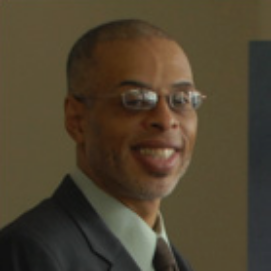 - Professor Lateef Mtima
- Professor Lateef Mtima
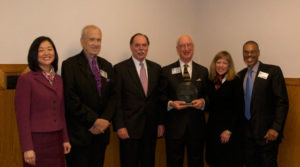
Much of Howard University’s history is about courageous people who put their lives on the line to open the door to opportunity not just for some people but for all. Intellectual property is all about opportunity and the protection of individual rights—opportunity based not on your ethnicity or your sexual preference, or the color of your skin, your religious beliefs, or your station in life, but instead on your creativity, your ingenuity, your intellect, and your abilities. Intellectual property is about opportunity and protecting the creative rights of all people, whoever they might be. In that sense, intellectual property has much in common with the struggle for social justice. I congratulate Howard University and Professor Lateef Mtima, the Founder and Director of the Institute for Intellectual Property and Social Justice, for fifteen years of excellence in educating the future leaders of the intellectual property bar. – Judge Richard Linn
Thoughts from Those There at the Beginning
Read more about the start of the CLE program here.
15 years ago, Howard University School of Law was pretty much an unknown on the IP front. But under the leadership of Professor Mtima and others at Howard, the IP and Social Justice CLE was inaugurated. Outside lawyers and distinguished members of the Judiciary have volunteered their time to the CLE to greatly increase the IP profile of Howard. For me, it has been enormously satisfying to watch this growth. May it continue. – Thomas Irving
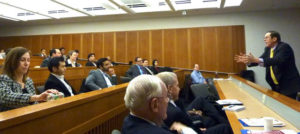
From inspirational vision of Professor Mtima and so many others at Howard University School of Law, we celebrate the 15th Anniversary of IIPSJ’s Annual IP and Social Justice conference. The conference has benefitted from the staunch support of judges, corporate counsels, outside counsels, and of course the fabulous Howard law students. It has been an absolute privilege and honor serving as the Chair of this conference and witnessing its growth over the years. Congratulations on the 15th Anniversary! – Esther Lim
I had the honor of being part of the creation of the Institute and the many wonderful “firsts” - the first CLE program, The first internship at Finnegan Henderson, the first special edition of the law journal, the first visit to the chambers of the CAFC, the first WIPO attendance etc. - It was a tremendous amount of work for an ever evolving cause with countless unanticipated rewards that flow-through my career and life. In fifteen short years, Institute has had an immeasurable impact on a macro and micro level on society, law, lawyers, entrepreneurs, inventors, creators and justice and has enabled me to work to leave a legacy that will inspire future generations. I am forever grateful. – Tameka Simmons
___________________________________________
IP & SOCIAL JUSTICE THROUGH THE YEARS
Through tireless efforts of Prof. Mtima most especially, but also through the supportive and independent efforts of many the others including especially those who have supported and continue to support IIPSJ, the social justice perspective has now worked its way into the very fabric IP discourse and reform at all levels of IP law, policy, advocacy, and administration. I have been most pleased to have been able to contribute to this project for the past 15 years and plan to continue to do so for awhile yet. – Steven Jamar
2007 Intellectual Property and Social Justice Symposium
Introductory Remarks: Applying the Intellectual Property Law in the Public Interest: Copyrights And the Public Use of Software
Presentation: Granting Patents Based On Race: The Practitioner’s Role in Shaping Social Policy
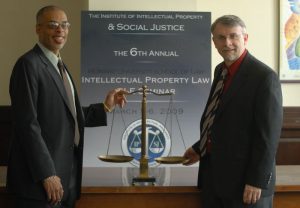
2009 Intellectual Property and Social Justice Symposium Presentation: Where Intellectual Property Theory Meets ‘Outsider’ Jurisprudence–What African-American Cultural Production Can Teach IP Policy

2011 Intellectual Property and Social Justice Symposium Presentation: Intellectual Property and the Pursuit of Civil Rights: Issues & Challenges for the Digital Information Age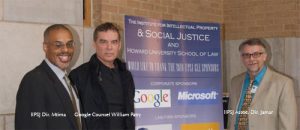
2014 Intellectual Property and Social Justice Luncheon Presentation: Intellectual Property Social Justice: Civil Rights and Economic Empowerment in the 21st
It has been my honor and privilege to participate in Howard’s IP and Social Justice CLE for more than ten years. This is the only CLE of which I am aware that is focused on highlighting the intersection of intellectual property and social justice. It is through this CLE and other work that IIPSJ demonstrates a commitment to ensuring equal access to our intellectual property systems, domestically and abroad. - Toni Y. Hickey
2017 Intellectual Property and Social Justice Luncheon Keynote: Property, Intellectual Property, and Social Justice: Mapping the Next Frontier
CLE Impact & Opportunities
The CLE programs help HUSL alumni and other practitioners develop and maintain expertise in IP practice and provide opportunities for experienced minority IP lawyers to demonstrate their expertise to an audience they might not otherwise reach. The CLE programs also provide networking opportunities for lawyers from diverse groups including attorneys from private practice, from government, from the judiciary, and from academia.
Having attended Howard University School of Law and entered into the IP profession as a patent attorney prior to the establishment of the IP & Social Justice CLE Program, I am so very honored and proud to see the impact that it has had on the students and the IP community as a whole by providing opportunities that previously were hard to come by or not available at all for diverse lawyers in IP law. – Jennifer M. Hayes
As a proud member of the class of 2005… I continue to take pride in this program as an essential element of my continuing legal education. The CLE is uniquely rooted in Howard’s mission of social justice, offering invaluable insights from esteemed members of the bar and bench. I am honored to join the 15th year of this program, and I look forward to returning for many years to come. – Idris McKelvey
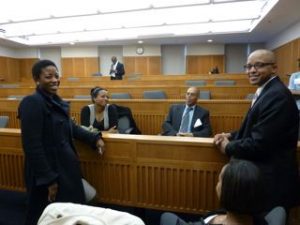
The IIPSJ CLE event has been essential in helping to direct the trajectory of my career. Every year I have participated, through the various modules and panel discussions, I walked away with a solid grasp of the current trends in the profession. Moreover, I emerged with an understanding of the future direction of the profession. Thus, I have been able to align my professional experiences with the ever evolving field of Intellectual Property. – Ulysses Williams
I came to Howard Law School with the intent to use my law degree to effect change... Attending the IP & Social Justice CLE program ... I gained a clearer understanding of the intellectual property-related social justice issues not only concerning disenfranchised people in the United States, but around the world. It is an invaluable program and service to the larger community. – Aisha (Williams) Cassis
Prior to attending law school, I spent more than a decade in the biotechnology arena as a scientist. When I entered Howard University School of Law in 2013, I knew that I wanted to be a patent attorney, however, I did not have a strong network of mentors in the patent field. I quickly joined the Howard University School of Law, Intellectual Property Student Association, and benefited from the mentorship of Professor Lateef Mtima. By attending the IP & Social Justice CLE Program each year, I was afforded the unparalleled opportunity to forge new mentoring relationships with practicing attorneys in the IP arena, and learn about emerging IP issues. This unique experience helped guide my career and continues to do so. Currently, I am a second year associate at Finnegan, Henderson, Farabow, Garrett & Dunner, LLP. – Candice R. Jones
Phil Hampton has graciously volunteered his time to participate in the CLE every year.
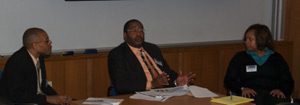
As a student here I benefited from mentoring by Professor Mtima and participation in the CLE, and soon found my passion in the practice of trademark law. By participating as an attorney, I am able to stay up to date and involved with issues of intellectual property and social justice; while continuing the tradition of mentoring the students I meet each year. Congratulations on 15 years and I look forward to the next 15 and many more! – Tashia Bunch
